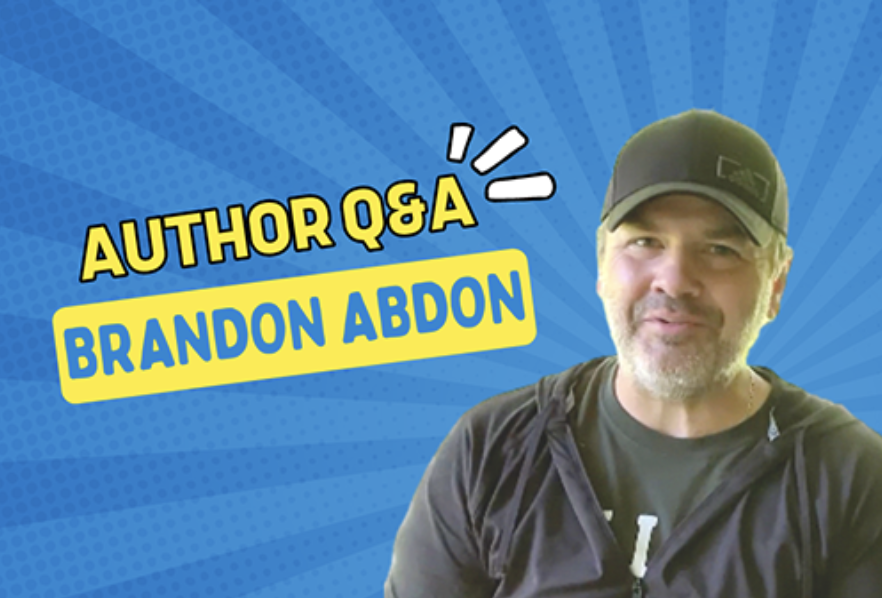Helping Students Earn the Sophistication Point in AP English
Every May, AP readers hear the same refrain: “The sophistication point is a unicorn.” But that’s not quite right. Unicorns don’t exist. The...
AP & Honors Mathematics
Explore Wiley titles to support both AP and Honors mathematics instruction.
Literacy Skills & Intensive Reading
Connections: Reading – Grades 6–12
Empower student success with a proven intensive reading program that develops strong reading skills in striving readers.
Drama, Speech & Debate
Basic Drama Projects 10th Edition
Build students’ confidence and competence with comprehensive, project-based theatre instruction.
Literature
Connections: Literature
Support learners as they study dynamic, relevant texts and bring the richness of diverse voices to students through literature.
Literature & Thought
Develop critical thinking, reading, and writing across literacy themes, genres, historical eras, and current events.
Language Arts
Vocabu-Lit® – Grades 6–12
Help students build word power using high-quality contemporary and classic literature, nonfiction, essays, and more.
Connections: Writing & Language
Help students develop grammar, usage, mechanics, vocabulary, spelling, and writing and editing skills.
Reading/English Language Arts
Measuring Up to the English Language Arts Standards
Incorporate standards-driven teaching strategies to complement your ELA curriculum.
English Language Learners
Measuring Up for English Language Learners
Incorporate research-based best practices for ELLs with an approach that includes a focus on language acquisition strategies.
Mathematics
Measuring Up to the Mathematics Standards
Incorporate standards-driven teaching strategies to complement your mathematics curriculum.
Foundations
Measuring Up Foundations
Help students master foundational math skills that are critical for students to find academic success.
Science
Measuring Up to the Next Generation Science Standards
Give students comprehensive NGSS coverage while targeting instruction and providing rigorous standards practice.
Assessment
Measuring Up Live
Deliver innovative assessment and practice technology designed to offer data-driven instructional support.
For a better website experience, please confirm you are in:
4 min read
 Dr. Brandon Abdon
Sep 16, 2025 4:26:35 PM
Dr. Brandon Abdon
Sep 16, 2025 4:26:35 PM

It’s a comment I hear from teachers everywhere I go. No matter what size of school or district or the AP “passing” rates of the students, it’s the same refrain: students often know how to gather evidence, but using that evidence effectively is another challenge altogether. While this is completely developmentally appropriate for students at this stage of development—and most professors teaching that first year student have the same problem—that doesn’t help fix it.
As experienced English majors and teachers, we all know that the difference between a good essay and a great one lies not just in identifying strong evidence, but in explaining why that evidence matters. How it relates to the claim(s) being made. This is where reasoning and commentary come in.
Watch Dr. Abdon's webinar, download his slide deck, and take a quiz to earn your 1 hour PD certificate below!
Writing is thinking on paper. Most students don’t see it like that: to them writing is just a task to get finished. We want them to write to show their thinking about whatever topic they are writing about. We want them to make a claim about a topic and then support it with good evidence from a text or from their experiences. But they cannot do any of that without thinking about all of it first. It is that thinking that often doesn’t make it to the page. That is their reasoning…their thinking.
When that reasoning doesn’t make it to the page, then the reader has to fill in the gaps. The reader has to do the student’s thinking for them, and—as I tell my own students:
The harder I have to work to give you credit for your own ideas, the worse off you are.
I want them to think of reasoning as the roadmap of an essay. Every piece of evidence should have a clear destination, and reasoning makes sure the reader arrives there without confusion. Without a strong line of reasoning, even well-chosen evidence can feel disjointed or underdeveloped to the reader. The problem often emerges from students failing to consider the reader.
The student writer is not the most important person in an essay. That distinction belongs to the people who will read the essay—the audience. Reasoning guides readers from claim to evidence and back again, ensuring that ideas follow a clear, logical progression that the reader can understand and follow.
Once students learn to put that reader at the front of their mind, their commentary often becomes focused on the readers’ understanding. I tell students that their audience is educated and curious, but does not have the same experiences or understand things the way that they do, so they have to provide detailed explanations of examples or evidence and explain the thinking they did about those things to help justify the claim.
It comes down to what, how, and why: what evidence got them thinking about that claim, how does that evidence work in their argument, and why it all justifies the claim they are making.
|
Commentary Answers What?, How?, and Why? |
||
|
What |
How |
Why |
|
What are the examples from experience or evidence from a text or source that got me thinking about this claim? |
How that example or evidence relates creates an effect like an idea, subclaim, or something else. |
Why this evidence/example and thinking justify the overall claim being made. |
Commentary deepens analysis by moving beyond summary. If students get stuck on the “What” and the “How,” then they may be summarizing the claim and evidence. While evidence shows what is happening in a text and explaining that evidence gets to how the evidence relates to their thinking, the commentary explains why it matters. Effective commentary asks questions such as:
In other words, commentary interprets evidence and connects it directly to the argument.
 Avoiding the Trap of Summary
Avoiding the Trap of SummaryA common pitfall for students is leaning too heavily on summary. They may quote or paraphrase evidence but stop short of analysis, leaving the reader to infer the connection. Strong writers resist this trap by always pairing evidence with explanation. Instead of repeating what the text says, they clarify why it matters and how it advances the argument.
Sophisticated arguments emerge when claims, evidence, and commentary are layered thoughtfully and the purpose and claims of the argument are closely aligned and account for implications and/or bigger meanings. In effect, they answer “So What?” about this argument beyond just the argument itself.
Rather than making a single point and moving on, students can build complexity by:
This approach not only strengthens essays for AP® scoring, but also fosters the kind of critical thinking expected in college and professional contexts. The ability to follow a line of reasoning and explain evidence is central to all academic writing. Whether drafting a process essay, a research paper, or a literary analysis, students who can provide insightful commentary elevate their writing from surface-level to meaningful.
Teachers can help students practice reasoning and commentary through scaffolded strategies.
By consistently emphasizing the link between evidence and claims, teachers help students internalize the habit of reasoning.
At its core, academic writing is about making claims clear, persuasive, and purposeful for an audience. A Line of Reasoning ensures that arguments are coherent for the reader and effective commentary ensures the student’s insights and ideas are well explained as part of that reasoning. Together, they help writers move beyond observation into analysis and argument—transforming evidence and examples into essays that resonate with readers.
By focusing on commentary as part of reasoning, students don’t just improve their AP scores. They also develop habits of thinking and writing that will serve them across disciplines, in college, and in life.
Advanced Placement®, AP®, and College Board® are trademarks registered and/or owned by the College Board.

Every May, AP readers hear the same refrain: “The sophistication point is a unicorn.” But that’s not quite right. Unicorns don’t exist. The...

Want to learn more about author and Garden of English creator Timm Freitas? Tune into our new Author Q&A series! Learn who inspired to become a...

With an emphasis on close reading, analysis, and full-length essays, losing track of sentences is easy. Join Dr. Brandon Abdon, author of our AP®...

Congratulations—or maybe condolences? You just found out you are teaching an Advanced Placement® (AP) English class next year. Whether it’s AP...

You know him as an AP® English teacher, webinar presenter, and author of our AP® Literature and Composition and AP® Language and Composition...

The sophistication point on the essay rubrics often meets with much weeping and gnashing of teeth. Students want to know how to write it. Teachers...

Join Brandon Abdon, Timm Freitas, and Beth Hall as they celebrate their new book–AMSCO's Writing for the AP Exam: English Language and Composition....

“The December spiral … prevents us from seeing the slow, meaningful gains our students are actually making.”

The first days of any AP® English course are less about handing out a syllabus and more about laying a foundation: telling students what is expected...

Join Brandon Abdon as he hosts teacher, author, consultant, and digital exam coach Melissa Alter Smith to discuss preparing for—and training...

Most AP English teachers recognize that the multiple-choice questions assess skills and essential knowledge in composition and reading, but students...

It’s a month before the AP exam and you’re freaking out- You're trying to think about what you need to review with your students, what you should ask...
